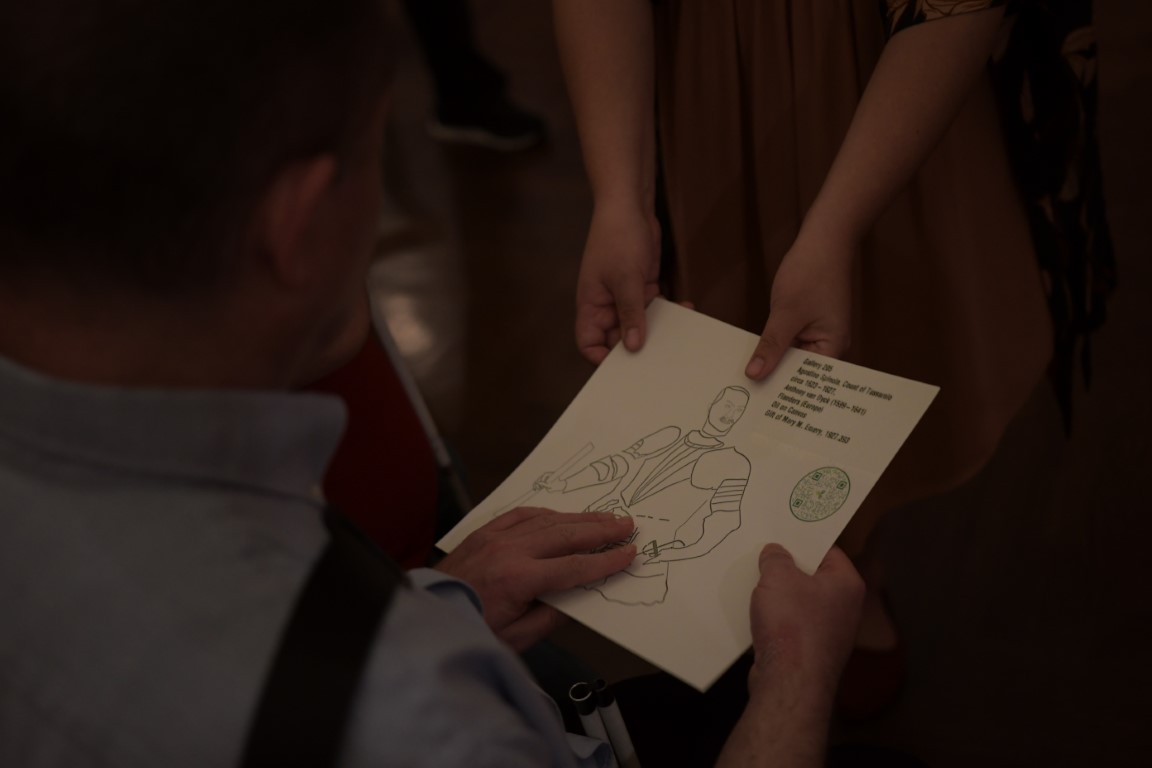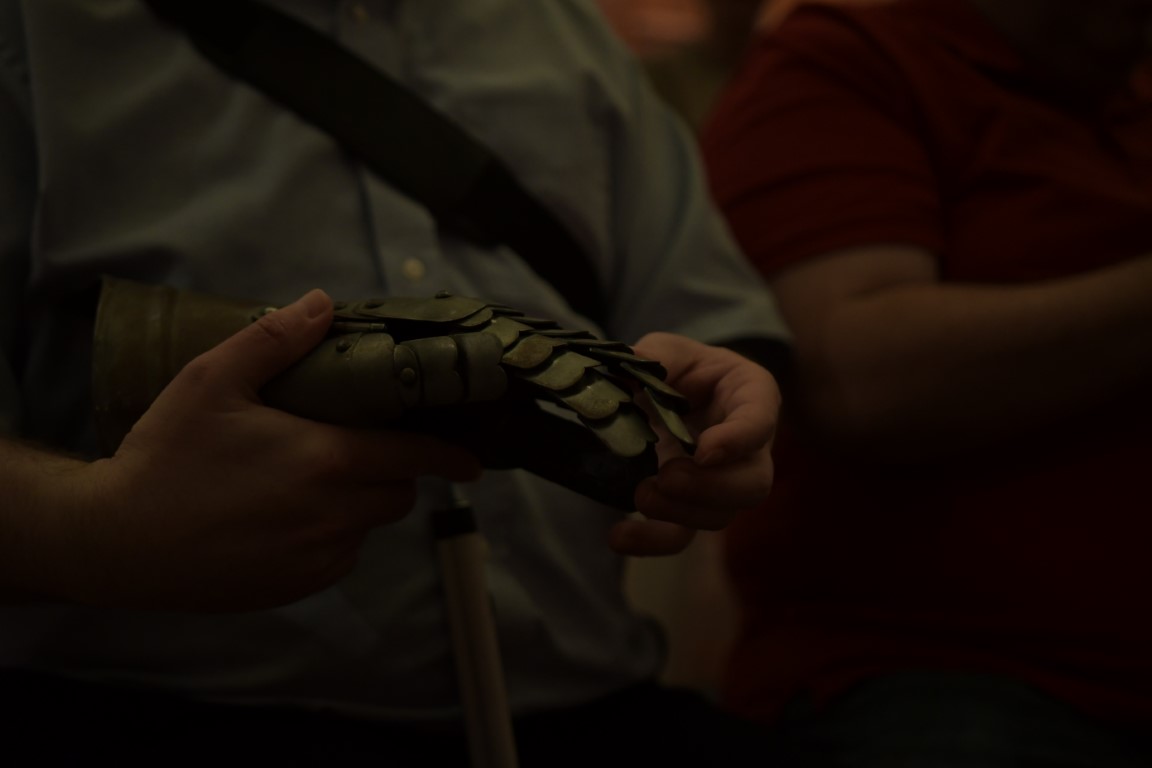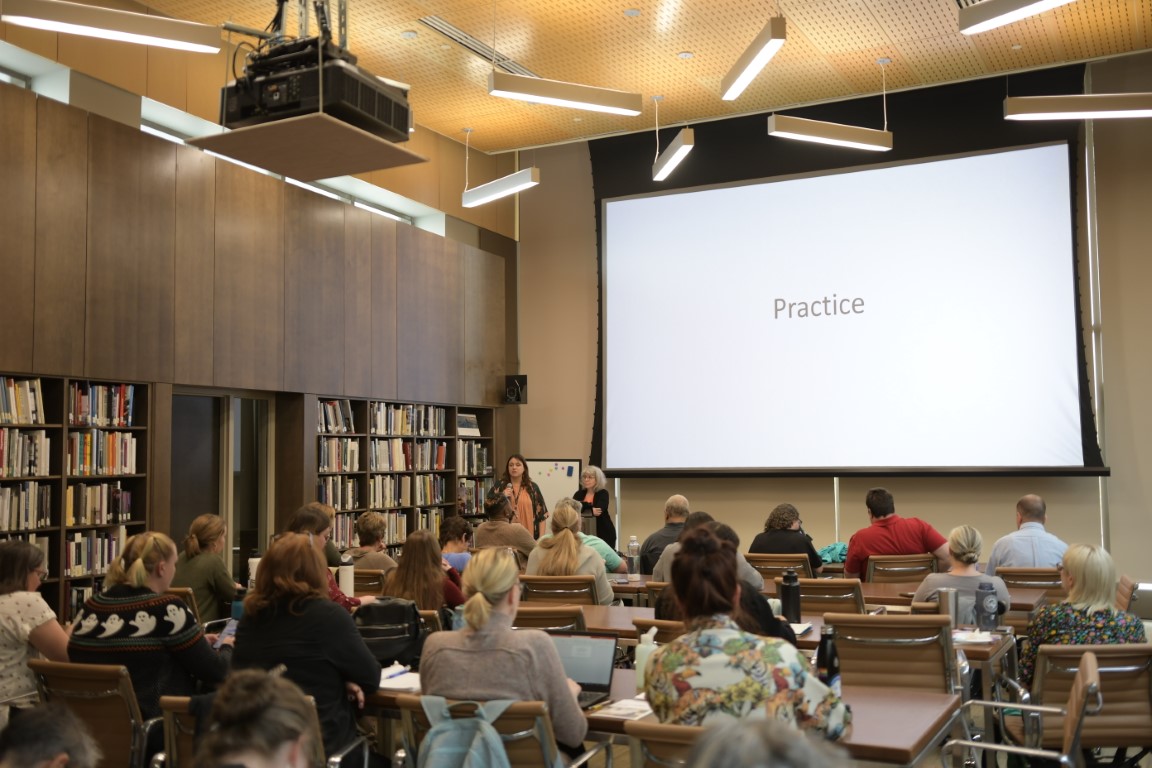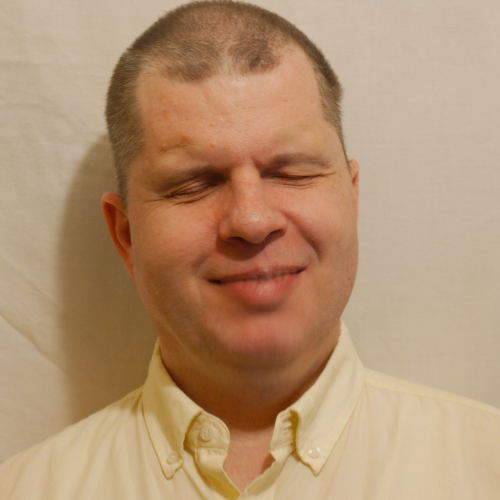I heard about the accessibility program of the Cincinnati Art Museum from Sara Birkofer at the LEAD conference. She talked about the touch tours she organizes, I immediately knew I have to get there somehow. I went up to Sara after their presentation and asked her to include me on one of her tours. Spoiler alert, if this was the only thing I did in Cincinnati, it was already worth flying there.
We scheduled the tour on a day when the museum hosted an audio description workshop, but more about that later, first I’d like to talk about the touch tour.
Sara organizes these tours, and people are asked to schedule on about a month in advance. There is more information on their accessibility page.
Being an art exhibit, the museum doesn’t land itself well for a just walk in tactile tour. By default, there really isn’t anything to touch, or at least, one should not touch anything. Generally art museums are more difficult to make tactile.
This is why a scheduled tour is necessary, where Sara provides a truly multisensory experience through a well-put together program. For that matter, she has more to show than one could cover during one tour. This is partly because the tour covers much more than just touching objects, she explains the objects and puts them into context so it is also a great educational experience. The explanations are not random, the introduction to each object is carefully scripted and orchestrated. The museum’s Youtube channel has a playlist where you can listen to some of the descriptions.
First we touched a painting by Anthony van Dyck, called “man in armor”. And I say touched, because the painting was converted to a raised image on a plastic sheet so one can explore the painting. Where it was interesting for me is that by default I wouldn’t know what the picture was, after all, I have very limited experience touching raised images or paintings. However, with the explanation it made perfect sense. I could also touch the hand piece of an armor, similar to what the man is wearing on the painting. It helped to put it into an even better perspective and understand what the original armor could feel like.
Then we had a chance to touch a piece of glass from Dale Chihuly‘s chandelier, for that matter I believe it wasn’t from the original, rather one that looks and feels exactly like that. It was helpful to try to imagine what the chandelier could look like, which one otherwise wouldn’t be able to touch.
The next object was a statue of Phillis Wheatley by Elizabeth Catlett. The statue is slightly abstract, for example the facial features, or the angularly shaped arms. Here my takeaway was, besides touching a beautiful statue, to get a sense of what it means when someone says abstract. Of course one can easily explain it, but it is not the same as touching it and understand something from art that is mostly visual. It happened so many times that I made a picture in my head about something based on an explanation, but when I touched it, I had to realize that I wasn’t even close.
The last object was a marble lunging mail lion from approximately 350 B.C. The size of the statue is comparable to a real lion. I am fascinated by ancient objects, and such a thing would also be rare to touch. Not to mention that it is very unlikely that someone would touch a real lion, so this is probably as close as I could get.
Overall, what was most special about this tour is the visual education aspect. Though it was fascinating to touch objects that one can only see on pictures outside of the museum, each object had an aspect from which I could learn something about how people see certain things as it was converted to a tactile experience. What is majorly missing from the education of blind people, and for a reason, is the explanation of visual concepts, just converting something from 2d to 3d is often not sufficient without an explanation.
Earlier I mentioned the audio description workshop, which was a bonus for me. I was invited to learn and also to help during the workshop. After the presentation, people were broken into groups of three, went around the museum, and described artifacts based on what they learned. Then there were visually impaired people, who would work with a team at a time to give them feedback on the descriptions they created. Since all the teams have done a fabulous job, I had the added bonus of having some pictures and ceramics described to me in a professional way.
I highly recommend this touch tour to anybody who is blind, regardless of the level of experience they have with art. But I would also recommend it to people who work in museums and are looking for a way to make their tours accessible. Many of the solutions are more innovative than costly, proving once again that an experience specifically made for blind people can be financially viable.
Let me know if you have a product or service that blind people would benefit from, I’d be happy to review it. Also, contact me if you need help to make your product or service accessible.
If you would like to read similar reviews, sign up for the monthly newsletter.





No comments! Be the first commenter?